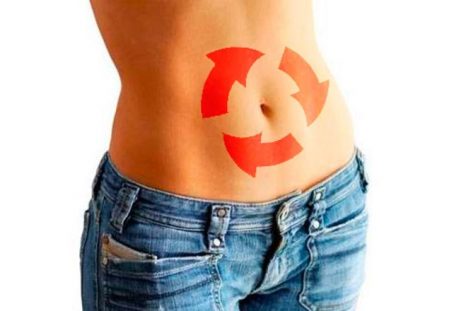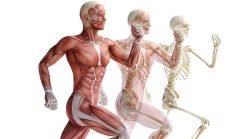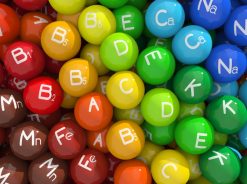Metabolism and energy involves a complex of complex biochemical reactions, which it can be quite difficult for an ordinary person to understand. This article will help to understand what processes occur in the body with the necessary compounds that we consume with food and that affect our metabolism.
Material Content:
General characteristics of metabolism and energy
Energy exchange and metabolism proceed according to the general scheme:
- the intake of substances in the body, its conversion and absorption;
- use in the body;
- removal or storage of surplus.
All metabolic processes are divided into 2 types:
- Assimilation (plastic metabolism, anabolism) - the formation of body-specific compounds from substances received into it.
- Dissimilation - the processes of decomposition of complex organic compounds into simpler ones, from which new, special substances will then be formed. Dissimilation reactions take place with the release of energy, so the totality of this type of process is also called energy exchange or catabolism.
These processes are opposite to each other, but are closely related. They proceed continuously, providing normal life. The nervous system is responsible for the regulation of metabolism and energy. The main department of the central nervous system, which controls all types of metabolism, is the hypothalamus.
Main types
Depending on the forms of compounds that undergo transformation in the body, several types of metabolism are distinguished. Each of them has its own specifics.
Squirrels
Proteins or peptides are polymers formed by amino acids.
Perform many vital functions:
- structural (present in the structure of tissue cells that make up the human body);
- enzymatic (enzymes are proteins involved in almost all biochemical processes);
- motor (the interaction of actin and myosin peptides provides all movements);
- energy (decompose, releasing energy);
- protective (proteins - immunoglobulins are involved in the formation of immunity);
- participate in the regulation of water-salt balance;
- transport (provide delivery of gases, biologically active substances, medicines, etc.).
Once in the body with food, proteins break down to amino acids, from which new peptides characteristic of the body are then synthesized. With a small intake of proteins with food, 10 of the 20 necessary amino acids can be produced by the body, the rest are indispensable.
Stages of protein metabolism:
- protein intake from food;
- the breakdown of peptides to amino acids in the digestive tract;
- moving the latter to the liver;
- distribution of amino acids in tissues;
- biosynthesis of specific peptides;
- excretion of unused amino acids in the form of salts from the body.
Fats
The types of metabolism and energy in the human body include fat metabolism. Fats are compounds of glycerol and fatty acids. For a long time it was believed that their use is not necessary for the full functioning of the body. However, certain types of such substances contain significant anti-sclerotic components.
 Fats, being an important source of energy, help to retain proteins in the body, which begin to be used to produce it with a lack of carbohydrates and lipids. Fats are essential for the absorption of vitamins A, E, D. Also, lipids are contained in the cytoplasm and cell wall.
Fats, being an important source of energy, help to retain proteins in the body, which begin to be used to produce it with a lack of carbohydrates and lipids. Fats are essential for the absorption of vitamins A, E, D. Also, lipids are contained in the cytoplasm and cell wall.
The biological value of fats is determined by the type of fatty acids with which they were formed. These acids can have two types:
- Saturated, not having double bonds in their structure, are considered the most harmful, since excessive consumption of foods with a high content of this type of acid can cause atherosclerosis, obesity and other diseases. Present in butter, cream, milk, fatty meat.
- Unsaturated - beneficial to the body. These include omega-3, -6 and -9 acids. They help strengthen immunity, restore hormonal levels, prevent the deposition of cholesterol, improve the appearance of skin, nails and hair. Sources of such compounds are oils of various plants and fish oil.
Stages of lipid metabolism:
- the intake of fats in the body;
- breakdown in the digestive tract to glycerol and fatty acids;
- the formation of lipoproteins in the liver and small intestine;
- transport of lipoproteins into tissues;
- the formation of specific cell lipids.
 Fat surplus is deposited under the skin or around the internal organs.
Fat surplus is deposited under the skin or around the internal organs.
Carbohydrates
Carbohydrates or sugars are the main source of energy in the body.
Carbohydrate metabolism:
- the conversion of carbohydrates in the digestive tract into simple sugars, which are then absorbed;
- the conversion of glucose to glycogen, its accumulation in the liver and muscles, or use to generate energy;
- the conversion of glycogen to glucose by the liver in the event of a drop in blood sugar;
- the creation of glucose from non-carbohydrate components;
- the conversion of glucose to fatty acids;
- oxygen decomposition of glucose to carbon dioxide and water.
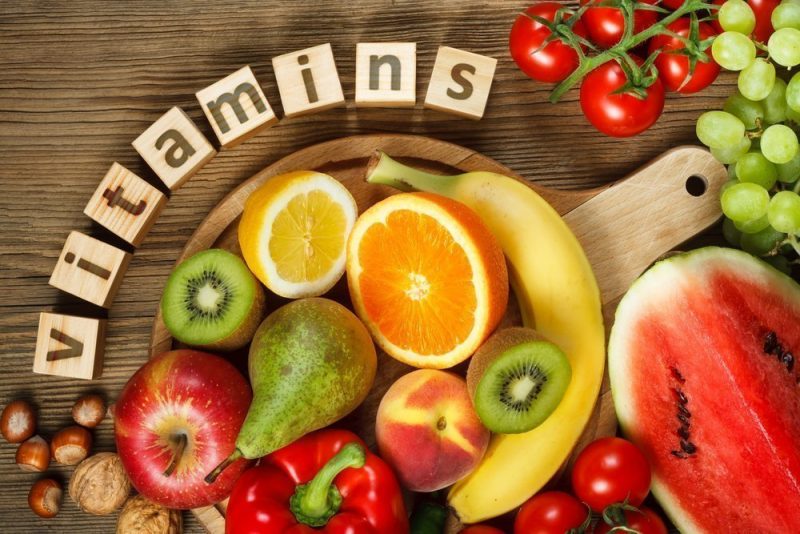 In the case of excessive consumption of foods rich in glucose, carbohydrate is converted to lipids. They are deposited under the skin and can be used to further transform energy in cells.
In the case of excessive consumption of foods rich in glucose, carbohydrate is converted to lipids. They are deposited under the skin and can be used to further transform energy in cells.
The value of water and mineral salts
Water-salt metabolism is a complex of processes of intake, use and removal of water and minerals. Most of the fluid enters the body from the outside. And also it is released in small volumes in the body during the decomposition of nutrients.
Functions of water in the body:
- structural (a necessary component of all tissues);
- dissolution and transport of substances;
- providing many biochemical reactions;
- an essential component of biological fluids;
- provides constant water-salt balance, participates in thermoregulation.
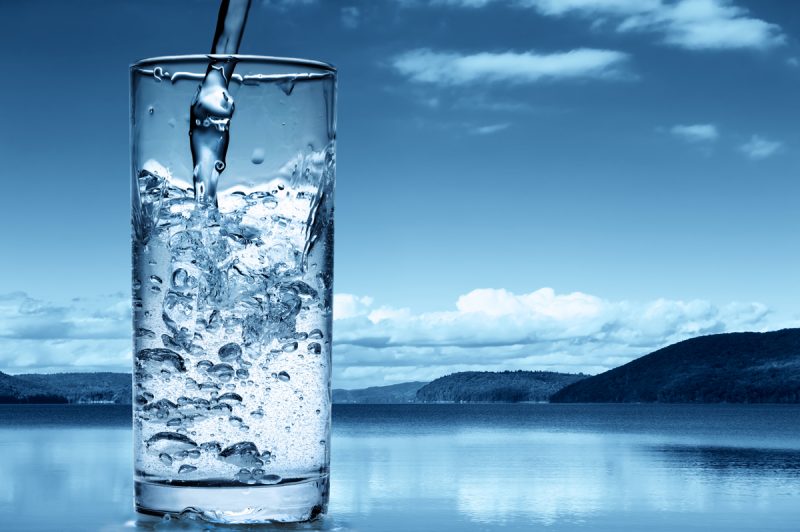 Liquid is excreted from the body using the lungs, sweat glands, urinary system and intestines.
Liquid is excreted from the body using the lungs, sweat glands, urinary system and intestines.
Mineral salts obtained with food can be divided into macro- and microelements. The first include minerals contained in significant quantities - magnesium, calcium, sodium, phosphorus and others. Trace elements are needed by the body in a very small amount. These include iron, manganese, zinc, iodine and other elements.
Lack of minerals can adversely affect the activity of various body systems. So, with a deficiency of magnesium and potassium, malfunctioning of the central nervous system, muscles (including the myocardium) is observed. A lack of calcium and phosphorus can affect bone strength, and iodine deficiency can affect thyroid function. Violations of the water-salt balance can cause urolithiasis.
Vitamins
Vitamins are a large group of simple compounds necessary for the full functioning of all body systems.
Vitamins are divided into 2 groups:
- water-soluble (B vitamins, vitamin C and PP) that do not accumulate in the body;
- fat-soluble (A, D, E) having a similar property of accumulation.
Certain compounds (vitamin B12, folic acid) are produced by intestinal microflora. Many vitamins are part of various enzymes, without which the implementation of biochemical processes is impossible.
Stages of Vitamin Exchange:
- food intake;
- moving to the place of accumulation or disposal;
- conversion to coenzyme (a component of an enzyme of non-protein origin);
- the combination of coenzyme and apoenzyme (protein part of the enzyme).
With a lack of any vitamin, hypovitaminosis develops, with an excess - hypervitaminosis.
Energy exchange
Energy metabolism (catabolism) is a complex of decomposition reactions of complex nutrients to simpler ones with the release of energy, without which growth and development, movement and other manifestations of vital activity are impossible. The resulting energy is accumulated in the form of ATP (universal energy source in living organisms), which is contained in all cells.
The amount of energy released after eating a food product is called its energy value. This indicator is measured in kilocalories (kcal).
Energy exchange takes place in several stages:
- Preparatory. It implies the breakdown of complex nutrients in the digestive tract to simpler ones.
- Oxygen-free fermentation is the transformation of glucose without the participation of oxygen. The process takes place in the cytoplasm of cells. The final products of the stage are 2 ATP molecules, water and pyruvic acid.
- Oxygen or aerobic phase. It passes in mitochondria (special organelles of cells), while pyruvic acid decomposes with the participation of oxygen, forming 36 ATP molecules.
Thermoregulation
Thermoregulation is the ability of a living organism to maintain a constant body temperature, which is an important indicator of heat exchange. For this indicator to be stable, the equality between heat transfer and heat production must be respected.
Heat production — the release of heat in the body. Its source is tissue in which reactions with the release of energy occur. So, the liver plays an important role in thermoregulation, because many biochemical processes are carried out in it.
Heat transfer or physical regulation can take place in three ways:
- heat conduction - heat transfer to the environment and objects in contact with the skin;
- heat radiation - the transfer of heat to air and surrounding objects by radiation of infrared (thermal) rays;
- evaporation - heat transfer through the evaporation of moisture with sweat or in the process of breathing.
What affects the metabolism
The metabolism of each specific organism has its own characteristics. The metabolic rate is determined by several factors:
- gender (usually in men metabolic processes are somewhat faster than in women);
- genetic factor;
- the proportion of muscle mass (people with developed muscles need more energy for muscle work, so the processes that occur will be faster);
- age (over the years, the metabolic rate decreases);
- hormonal background.
A huge impact on the metabolism process is provided by nutrition. Here, both diet and food intake are important. For the proper functioning of the body, you need the optimal amount of consumed proteins, fats, carbohydrates, vitamins, minerals and fluids. It is important to remember that eating a little better, but often, since large breaks between meals help slow down the metabolism, which means they can lead to obesity.








